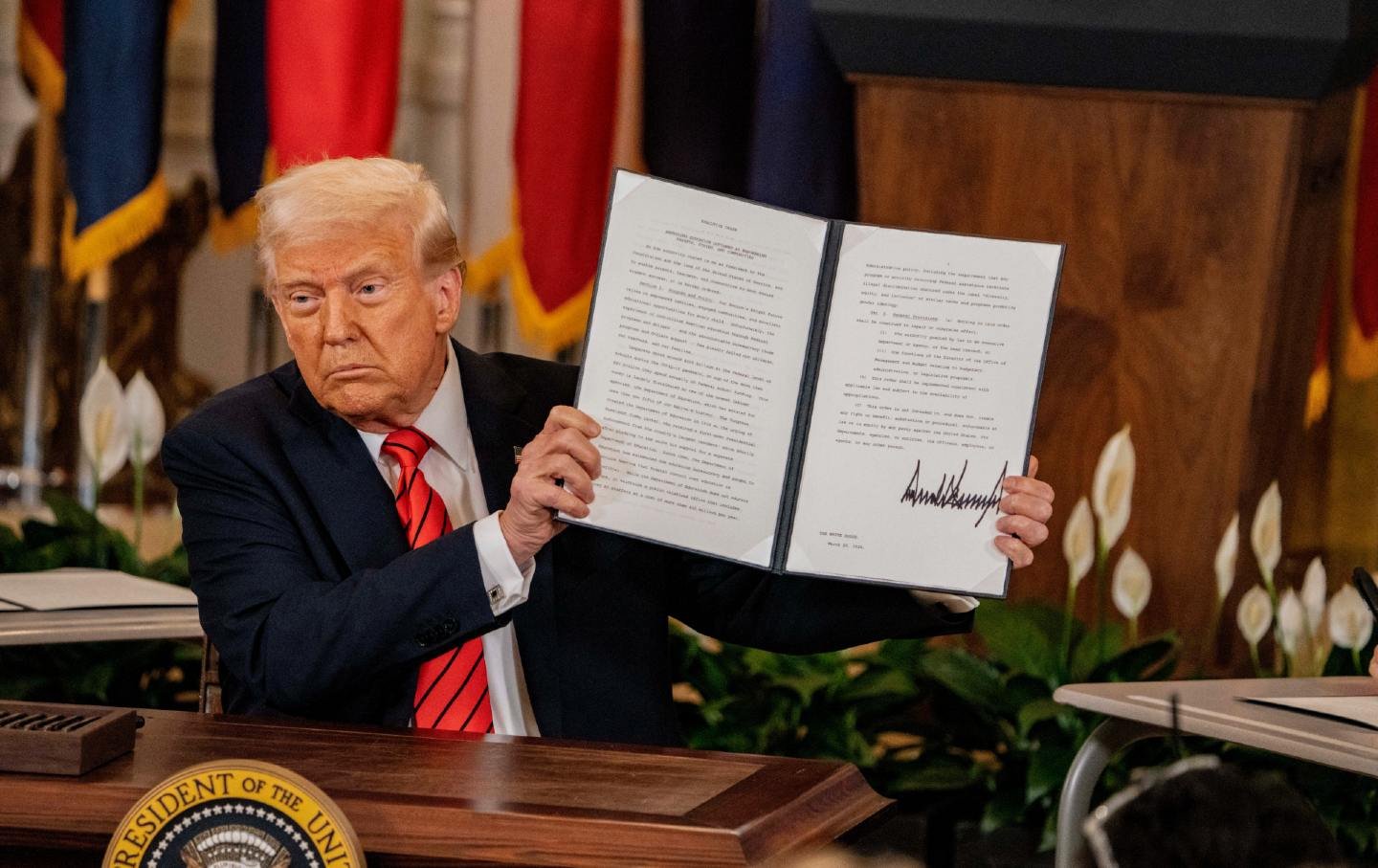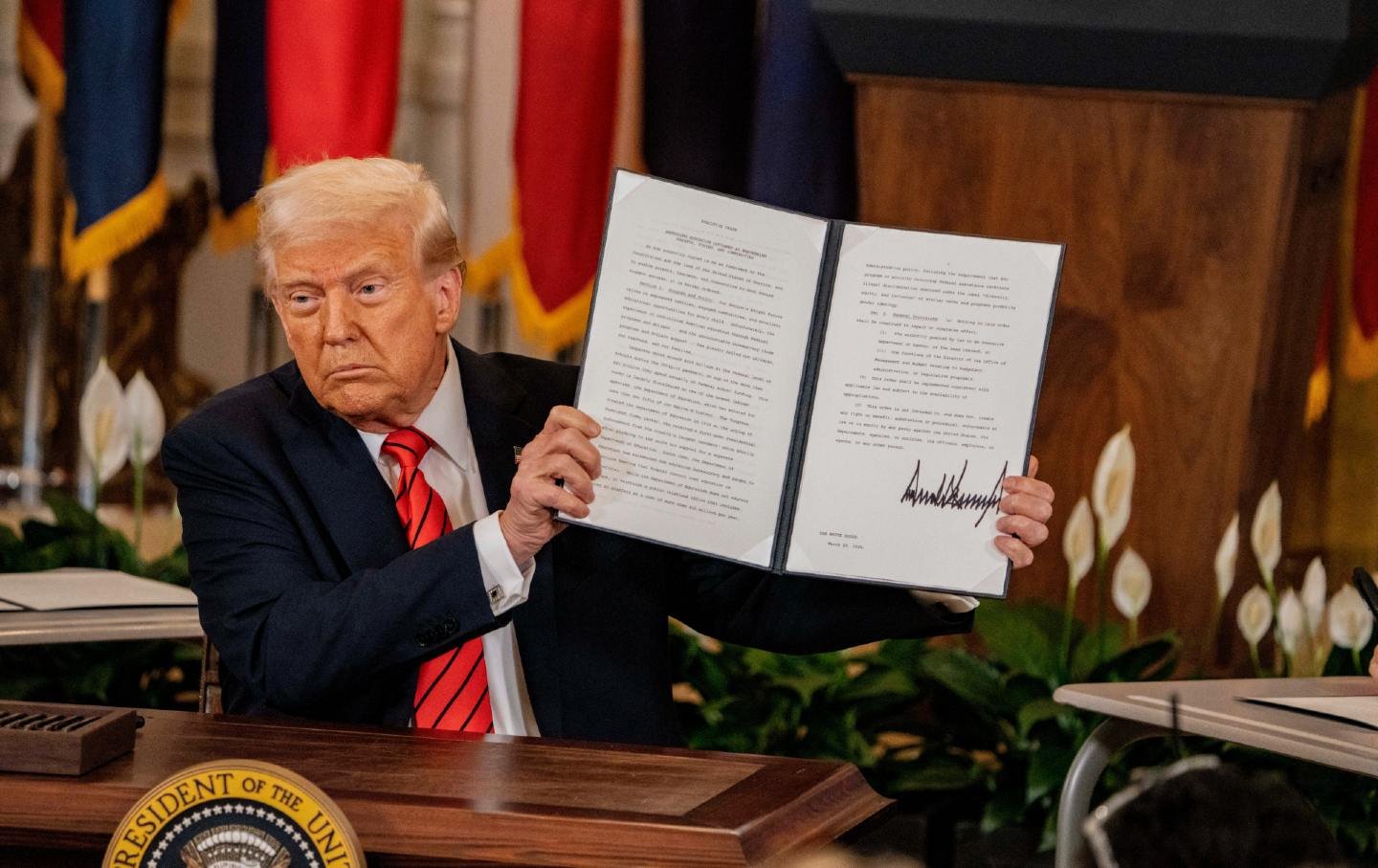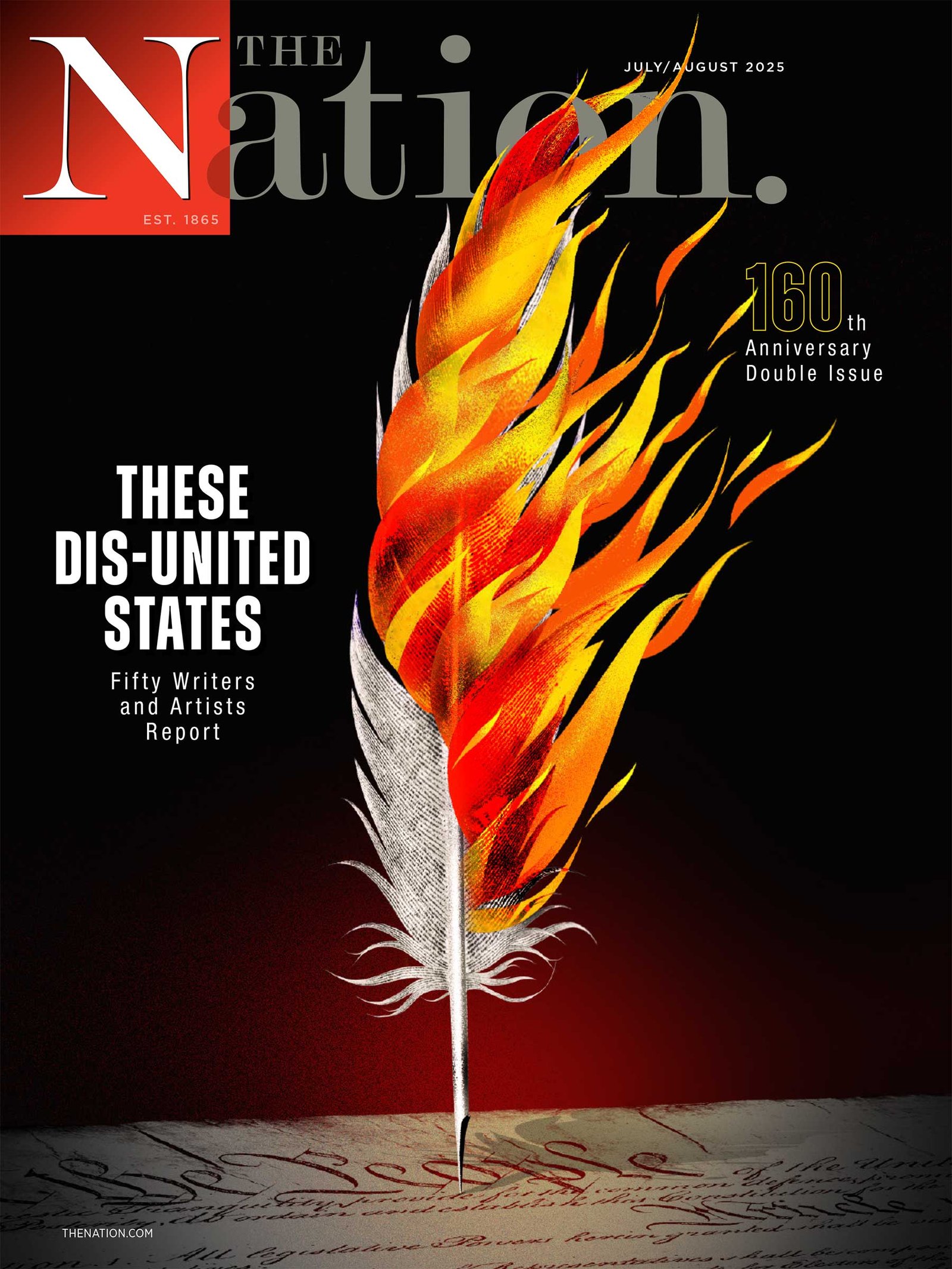In ruling the president can decimate the Department of Education, the court took a key congressional power—and gave it to Trump.

The Supreme Court just gave Donald Trump a backdoor way to revoke federal spending authorized by Congress, in violation of the separation of powers written into the Constitution. This backdoor way also allows Trump to do one of his favorite things: fire people—specifically, employees of the Department of Education. In the process, the court has handed him the means to decimate the agency and, with it, myriad federal programs created by Congress.
The case, which was resolved on the Supreme Court’s “shadow docket”—which should really be viewed as Trump’s personal docket—is called McMahon v. New York. It involves Ignorance Secretary Linda McMahon’s plan to lay off over half of the people who work for the Department of Education. The firings were challenged in federal court by a teachers union, education groups, school districts, and a number of states, all of which will argue that they will be harmed if half the workforce is taken out. The Department of Education is primarily responsible for distributing money to college students, mostly in the form of grants and loans, enforcing antidiscrimination laws, and overseeing programs for low-income students and students with disabilities.
The plaintiffs won in lower court and, as has now become customary, lost in front of the Supreme Court. A 6–3 Republican supermajority ruled that, once again, Trump can do whatever he wants. They lifted the lower court’s ruling and allowed McMahon to commence body-slamming all the smart people who educate others to know that wrestling is fake.
Technically, the Supreme Court’s order is a “temporary” procedural ruling that merely allows Trump to proceed with his plans until there can be a full hearing on the constitutionality of his actions. But don’t get it twisted. Firing over half of the department is not a thing that can be easily undone at a later date.
Moreover, firing all these people is merely a prelude to Trump’s plans to shutter the Department of Education. By authorizing the mass firings, the Supreme Court is telling Trump that he doesn’t actually have to formally “close” the department; he can just fire every last person working there and achieve the same result.
It’s this last part that should alert people to the massive constitutional problem with the Supreme Court’s ruling: Congress created the Department of Education, so Congress should be the only body that can end it. And that goes double for most of the spending programs run out of the department: They were authorized and funded by Congress, and only Congress can defund them.
The issue here is called “impoundment.” As I (and many others) have written before, the 1974 Impoundment Control Act prevents the president from unilaterally refusing to spend money that has been authorized by Congress. It builds on a long-standing constitutional principle that Congress controls the spending in this country, not the president. Allowing Trump to refuse to spend (or “impound”) federal funds violates the fundamental constitutional order of this country.
The Supreme Court has, so far, not weighed in on the impoundment issue directly. But McMahon v. New York has achieved the practical effect of greenlighting Trump’s impoundment efforts. What good is a federal spending program if Trump is allowed to fire everybody who administers it?
It’s not like Trump and McMahon’s proposed firings are random. They’ve targeted programs people from their klan don’t like.
In dissent, Justice Sonia Sotomayor offered some examples of exactly which members of the department they’re firing. They’re firing everybody in the English Language Acquisition department, everybody in the Special Education department responsible for ensuring compliance with the American with Disabilities Act, and, of course, the members of seven of the 12 regional divisions of the department’s Office of Civil Rights.
These terminations aren’t targeted just at workers but at programs: programs that have already been authorized and funded by Congress.
Ian Millhiser says that the decision could effectively give Trump “the unilateral authority to repeal federal laws.” I couldn’t agree more, and I cannot emphasize enough how much this ruling upends anything approaching the constitutional order as we’ve come to understand it. Under this ruling, Trump can simply fire anybody in the federal government administering a program he doesn’t like.
Popular
“swipe left below to view more authors”Swipe →
That is not the power of a president, it’s the power of a dictator. More than granting Trump immunity, more than anything else this court has done, this ruling gives him the powers of a king.
And the Republicans on the court did this while they were on vacation, in an emergency-docket ruling that didn’t even require them to explain themselves.
The Supreme Court is of no more use. It will not protect democracy, the rule of law, or even the constitutional order. The next Democratic president should use the powers granted to Trump to impound the court.
Elie Mystal
Elie Mystal is The Nation’s justice correspondent and a columnist. He is also an Alfred Knobler Fellow at the Type Media Center. He is the author of two books: the New York Times bestseller Allow Me to Retort: A Black Guy’s Guide to the Constitution and Bad Law: Ten Popular Laws That Are Ruining America, both published by The New Press. You can subscribe to his Nation newsletter “Elie v. U.S.” here.


